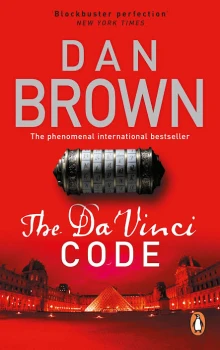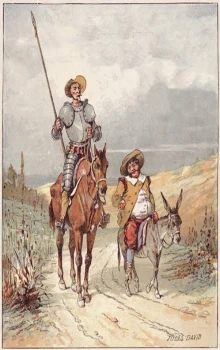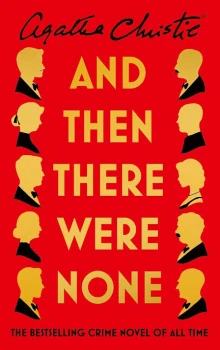Murray Hill Place—the new Opus Dei World Headquarters and conference center—is
located at 243 Lexington Avenue in New York City. With a price tag of just over $47
million, the 133,000-square-foot tower is clad in red brick and Indiana limestone.
Designed by May & Pinska, the building contains over one hundred bedrooms, six
dining rooms, libraries, living rooms, meeting rooms, and offices. The second, eighth,
and sixteenth floors contain chapels, ornamented with millwork and marble. The
seventeenth floor is entirely residential. Men enter the building through the main doors
on Lexington Avenue. Women enter through a side street and are “acoustically and
visually separated” from the men at all times within the building.
Earlier this evening, within the sanctuary of his penthouse apartment, Bishop Manuel
Aringarosa had packed a small travel bag and dressed in a traditional black cassock.
Normally, he would have wrapped a purple cincture around his waist, but tonight he
would be traveling among the public, and he preferred not to draw attention to his high
office. Only those with a keen eye would notice his 14-karat gold bishop's ring with
purple amethyst, large diamonds, and hand-tooled mitre-crozier appliqué. Throwing the
travel bag over his shoulder, he said a silent prayer and left his apartment, descending to
the lobby where his driver was waiting to take him to the airport.
Now, sitting aboard a commercial airliner bound for Rome, Aringarosa gazed out the
window at the dark Atlantic. The sun had already set, but Aringarosa knew his own star
was on the rise. Tonight the battle will be won, he thought, amazed that only months ago
he had felt powerless against the hands that threatened to destroy his empire.
As president-general of Opus Dei, Bishop Aringarosa had spent the last decade of his
life spreading the message of “God's Work”—literally, Opus Dei. The congregation,
founded in 1928 by the Spanish priest Josemaría Escrivá, promoted a return to
conservative Catholic values and encouraged its members to make sweeping sacrifices in
their own lives in order to do the Work of God.
Opus Dei's traditionalist philosophy initially had taken root in Spain before Franco's
regime, but with the 1934 publication of Josemaría Escrivá's spiritual book The Way—
999 points of meditation for doing God's Work in one's own life—Escrivá's message
exploded across the world. Now, with over four million copies of The Way in circulation
in forty-two languages, Opus Dei was a global force. Its residence halls, teaching centers,
and even universities could be found in almost every major metropolis on earth. Opus
Dei was the fastest-growing and most financially secure Catholic organization in the
world. Unfortunately, Aringarosa had learned, in an age of religious cynicism, cults, and
televangelists, Opus Dei's escalating wealth and power was a magnet for suspicion.
“Many call Opus Dei a brainwashing cult,” reporters often challenged. “Others call you
an ultraconservative Christian secret society. Which are you?”
“Opus Dei is neither,” the bishop would patiently reply. “We are a Catholic Church.
We are a congregation of Catholics who have chosen as our priority to follow Catholic
doctrine as rigorously as we can in our own daily lives.”
“Does God's Work necessarily include vows of chastity, tithing, and atonement for
sins through self-flagellation and the cilice?”
“You are describing only a small portion of the Opus Dei population,” Aringarosa
said. “There are many levels of involvement. Thousands of Opus Dei members are
married, have families, and do God's Work in their own communities. Others choose
lives of asceticism within our cloistered residence halls. These choices are personal, but
everyone in Opus Dei shares the goal of bettering the world by doing the Work of God.
Surely this is an admirable quest.”
Reason seldom worked, though. The media always gravitated toward scandal, and
Opus Dei, like most large organizations, had within its membership a few misguided
souls who cast a shadow over the entire group.
Two months ago, an Opus Dei group at a midwestern university had been caught
drugging new recruits with mescaline in an effort to induce a euphoric state that
neophytes would perceive as a religious experience. Another university student had used
his barbed cilice belt more often than the recommended two hours a day and had given
himself a near lethal infection. In Boston not long ago, a disillusioned young investment
banker had signed over his entire life savings to Opus Dei before attempting suicide.
Misguided sheep, Aringarosa thought, his heart going out to them.
Of course the ultimate embarrassment had been the widely publicized trial of FBI spy
Robert Hanssen, who, in addition to being a prominent member of Opus Dei, had turned
out to be a sexual deviant, his trial uncovering evidence that he had rigged hidden video
cameras in his own bedroom so his friends could watch him having sex with his wife.
“Hardly the pastime of a devout Catholic,” the judge had noted.
Sadly, all of these events had helped spawn the new watch group known as the Opus
Dei Awareness Network (ODAN). The group's popular website— www.odan.org—
relayed frightening stories from former Opus Dei members who warned of the dangers
of joining. The media was now referring to Opus Dei as “God's Mafia” and “the Cult of
Christ.”
We fear what we do not understand, Aringarosa thought, wondering if these critics had
any idea how many lives Opus Dei had enriched. The group enjoyed the full
endorsement and blessing of the Vatican. Opus Dei is a personal prelature of the Pope
himself.
Recently, however, Opus Dei had found itself threatened by a force infinitely more
powerful than the media . . . an unexpected foe from which Aringarosa could not
possibly hide. Five months ago, the kaleidoscope of power had been shaken, and
Aringarosa was still reeling from the blow.
“They know not the war they have begun,” Aringarosa whispered to himself, staring
out the plane's window at the darkness of the ocean below. For an instant, his eyes
refocused, lingering on the reflection of his awkward face—dark and oblong, dominated
by a flat, crooked nose that had been shattered by a fist in Spain when he was a young
missionary. The physical flaw barely registered now. Aringarosa's was a world of the
soul, not of the flesh.
As the jet passed over the coast of Portugal, the cell phone in Aringarosa's cassock
began vibrating in silent ring mode. Despite airline regulations prohibiting the use of cell
phones during flights, Aringarosa knew this was a call he could not miss. Only one man
possessed this number, the man who had mailed Aringarosa the phone.
Excited, the bishop answered quietly. “Yes?”
“Silas has located the keystone,” the caller said. “It is in Paris. Within the Church of
Saint-Sulpice.”
Bishop Aringarosa smiled. “Then we are close.”
“We can obtain it immediately. But we need your influence.”
“Of course. Tell me what to do.”
When Aringarosa switched off the phone, his heart was pounding. He gazed once
again into the void of night, feeling dwarfed by the events he had put into motion.
Five hundred miles away, the albino named Silas stood over a small basin of water and
dabbed the blood from his back, watching the patterns of red spinning in the water.
Purge me with hyssop and I shall be clean, he prayed, quoting Psalms. Wash me, and I
shall be whiter than snow.
Silas was feeling an aroused anticipation that he had not felt since his previous life. It
both surprised and electrified him. For the last decade, he had been following The Way,
cleansing himself of sins . . . rebuilding his life . . . erasing the violence in his past.
Tonight, however, it had all come rushing back. The hatred he had fought so hard to
bury had been summoned. He had been startled how quickly his past had resurfaced.
And with it, of course, had come his skills. Rusty but serviceable.
Jesus' message is one of peace . . . of nonviolence . . . of love. This was the message
Silas had been taught from the beginning, and the message he held in his heart. And yet
this was the message the enemies of Christ now threatened to destroy. Those who
threaten God with force will be met with force. Immovable and steadfast.
For two millennia, Christian soldiers had defended their faith against those who tried to
displace it. Tonight, Silas had been called to battle.
Drying his wounds, he donned his ankle-length, hooded robe. It was plain, made of
dark wool, accentuating the whiteness of his skin and hair. Tightening the rope-tie
around his waist, he raised the hood over his head and allowed his red eyes to admire his
reflection in the mirror. The wheels are in motion.





